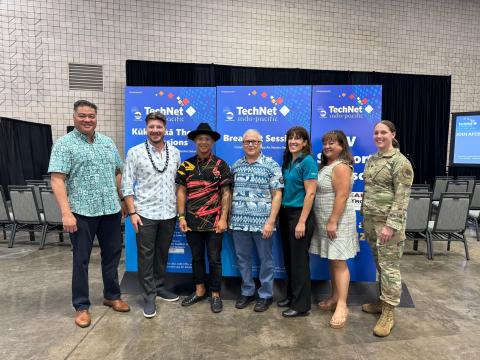The Intelligence Community Is Open for R&D Business
A new federal lab at the CIA has come out of the shadows, moving from “stealth mode” to posting and accepting public solicitations to capitalize on emerging technologies from industry and academia. The agency has added a public website with technology development information and is in the process of setting up intellectual property protections, explained Dan Wang, director of CIA Federal Labs.
"We are like a baby with a mustache - we expect to grow fast," says Dr. Dan Wang about @CIA's new federal lab that came out of stealth mode last year. #AFCEAIntel @AFCEA_Intel pic.twitter.com/u2yVwA0juk
— Kimberly Underwood (@Kunderwood_SGNL) May 26, 2021
“I think, we, in the CIA, but I think the intelligence community (IC) at large, recognizes the increased rate of change that we see in business and technology today,” Wang said. “Once upon a time, ‘business as usual’ was sufficient, but where we are going, things are much more connected. From digitization, mobilization, augmentation, automation and integration, there are so many different trends than what we used to see. Science fiction is indeed becoming science fact.”
Dan Wang, director @CIA Federal Labs:
— Kimberly Underwood (@Kunderwood_SGNL) May 26, 2021
With technology, what got us here won’t get us there.
Science fiction is becoming science fact, with digitalization, mobilization, and automation, but are we driving that change or are we driven by it? #AFCEAIntel @AFCEA_Intel @AFCEA pic.twitter.com/gr3hLNLiRd
The lab director sees more research and development (R&D) opportunities for industry, as well as multiple federal government agencies in the IC working more closely. “We are looking to turn national security into the premier destination for technology and innovation,” he noted. “And we can do this in a curated approach that truly leverages a broad network to help us scale some of these technologies.”
Wang, along with moderator Lori Scherer, vice president, Business Development and Strategy, F5 Consulting Group; John Beieler, director of Science & Technology (S&T), Office of the Director of National Intelligence (ODNI); and Cindy Daniell, director of Research, National Geospatial-Intelligence Agency (NGA); spoke May 26 at AFCEA International’s virtual Spring Intelligence Symposium.
The CIA, in particular, is looking for energy/power solutions and biotechnology, the lab director said, as well as artificial intelligence and data analytic capabilities; distributed ledger, blockchain-enabled technologies; virtual and augmented reality solutions; high performance and quantum computing; future wireless and telecommunications technologies; and robotic, autonomous and human interface systems.
Over at the NGA, officials are leveraging the Small Business Innovative Research (SBIR) program to bring in advanced capabilities. In fact, the agency is using that contracting vehicle “very robustly,” and reportedly is the only IC agency to employ it, Daniell stated.
“I will say it's a great addition to our portfolio, and we welcome more entrants into that SBIR world,” she said. “We in the national security business, the government side of it, are looking to form great partnerships across the entire spectrum of the R&D spectrum from the very beginning, the nascent basic research that needs to happen out in academia, all the way through the development and test and evaluation, to get it working out in operations in the field. And what they used to call the ‘Valley of Death’ for start-up technologies, I like to think of as the ‘Ditch of Despair’ and we want to make sure that we help companies cross that chasm.”
Dr. Cindy Daniell, director of Research @NGA_GEOINT: We are looking for robust partnerships across the entire chain of tech development, from basic research, R&D, test & eval, thru the valley of death, crossing to use & fielding. #AFCEAIntel @AFCEA_Intel @AFCEA #innovation pic.twitter.com/O8QgKtBDcy
— Kimberly Underwood (@Kunderwood_SGNL) May 26, 2021
Earlier this year, the NGA issued its inaugural Broad Agency Agreement as a way to bring in emerging technologies unique to the geospatial world. It recently held an industry day—and is planning another virtual industry event for September. “For the very first time, we had an industry day on the topic of ‘innovative seedlings. It is a key critical part of the R&D spectrum where you start with a seedling before you can come to be a large program,” Daniell explained. Moonshot Labs, another part of the NGA, is working with companies or organizations—which have well-developed prototypes—to relay how the agency operates and bridge the development gap.
At the ODNI, Beieler’s role as S&T director is to make sure advanced technologies can scale for use by the whole IC. “We're making sure that as a community we are investing smartly,” he stated. “A lot of what we're focused on in the ODNI is understanding what we need at the community level from an S&T standpoint, where we are currently spending our money within our S&T portfolio, and where within that the gaps fall.”
At ODNI, we are looking at how to scale technology use for the entire Intel Community as well as how to leverage other's investments from within the IC to benefit the whole community, says Dr. John Beieler, director of Science & Technology @ODNIgov #AFCEAIntel @AFCEA_Intel pic.twitter.com/xa1gl9L2Av
— Kimberly Underwood (@Kunderwood_SGNL) May 26, 2021




Comments